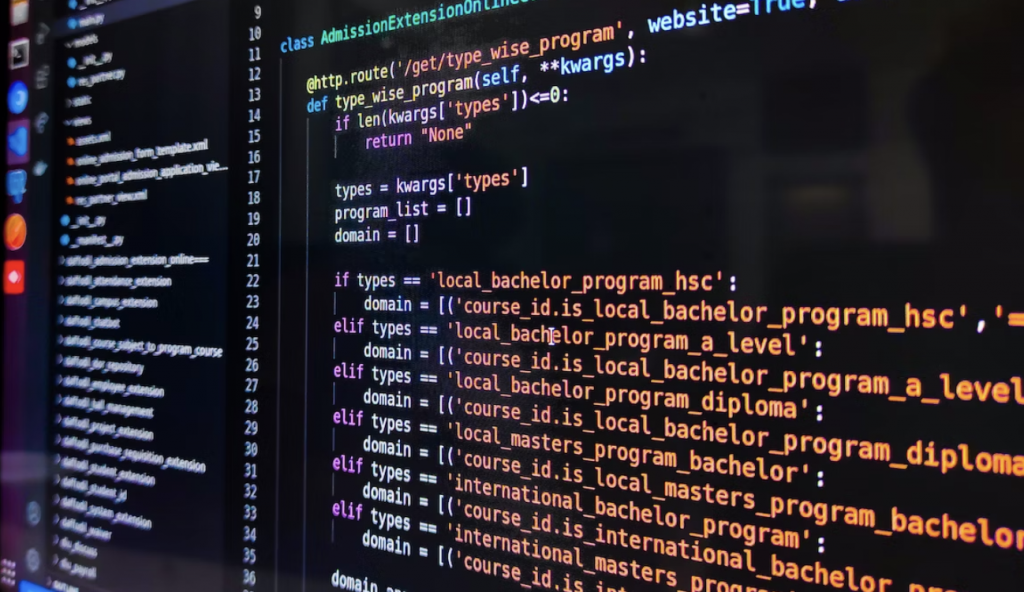Animation is always changing. Think about the cartoons you watched as a kid – they look pretty different from what we see now, right? Since the start, animation has been growing and changing into what we have today.
At first, animation was mostly in movies and short clips. But now, it's everywhere: TV shows, commercials, YouTube, social media, and even video games. The pictures and graphics in all these places have gotten better over time and they're still improving.
Just think about how animation looked 2 or 3 years ago. It's changed a lot, and in ways we might not have expected. So, what's next for animation? Where is it heading?
In this blog, we're going to share our thoughts on the future of animation and what new things we might see in the next few years.
Improvement In Quality and Design

GIF by Mathew Lucas via GIPHY
Although it’s easy to assume that the animation we see today is already at its highest quality, there’s no doubt that it will get better in the future. In the past, we watched movies only in 2D animation, but now we can watch them in 3D and even in virtual reality.
With virtual reality and augmented reality now on the rise, animators are doing their best to make environments and objects even more similar to what we see in real life.
Mindscrapper says that in the animation in the gaming industry, games are expected to have better graphics using more advanced software and hardware.
Joe DiDomenico of Applehead Factory Design Studio says that the future of animation is now limitless. Over the years, new techniques and tools have allowed us to create things quicker and much better than before.
As the design and quality of animation improve, we might find ourselves having a difficult time differentiating between what is real and what is animated.
More TV Show Programs for Adults

GIF by The Animal Crackers Movie via GIPHY
Many Hollywood live-action projects have been paused due to the ongoing pandemic. This has created a perfect gap in the entertainment world, which animation was more than ready to fill.
Animation has been in demand and part of the economy way before the pandemic, but this caused an enormous boom in TV animation for children and adults.
The wild success of shows like South Park, Rick and Morty, and The Midnight Gospel prove that there is a place for adult TV shows in the animation industry. In the years to come, there will be a continuous demand for this type of animation.
Animation will no longer be seen as simply “for kids.” Instead, it will continue its elevation towards equality with live-action films and shows. Animated programs have attracted an audience outside of just people who watch shows on television.
People who watched animated TV shows in timeslots before can now watch them whenever they want by simply going on Netflix, YouTube, and other streaming platforms.
Instead of going through many processes and being restricted with the kind of content they can produce, animators have shifted to finding an audience online and separating themselves from TV shows like sports and news.
The Roundtable says shows can have longer run times, better content, and mature moments and themes, which will defeat TV cable’s purpose in a few years.
Procedural Workflows Going Mainstream

GIF by SpongeBob SquarePants via GIPHY
Andrew Price, the speaker in Blender’s YouTube video about how artificial intelligence will change the 3D industry, says that animation assets are expensive and time-consuming to create.
There is always that one-to-one input to output whether you want to model, texture, and revise, even for simple animation.
Fortunately, there is a solution to this problem. He says procedural workflows in the future will become more mainstreamed. Software will be able to self-generate, which will instantly lower costs.
We work in the virtual world, not in the real world. We need to create things smartly and quicker, and the technology is in place to help us get there
Softwares such as Houdini and Poliigon make animators’ lives easier. Just by making a node setup, you can easily create variations from it. It can quickly capture things, but it is also a huge cost saver for animation studios and freelance animators.
Films Becoming More Hyperrealistic

Another rising trend in the animation industry today is mixing animation with computer graphics animation. With better software and tools, animators now have more control and can make realistic environments in animation.
This kind of hyperrealistic style of animation can be used in backgrounds, effects, or characters. One example of this is the computer-animated short film titled “Piper'' produced by Pixar Animation Studios.
The short, featuring a sandpiper bird who learns to overcome her fears as she grows up on the beach, shows a hyperrealistic animation style that will have you questioning what’s real.
The Future of Animation is in the Use of Machine Learning

Image by Radowan Nakif Rehan via Unsplash
Traditional software usually works like this: an action, such as cropping a photo, is done on software like Photoshop, creating an output.. This implies a lot of manual work. But with machine learning, you add an input, assess it, take appropriate action, compare it with others, and decide whether it is bad or good.
Andrew Price says to do this well, you will need to have huge datasets and fast hardware that improve as time goes by.
An example of an animation process that can be done via a machine learning tool is denoising. A machine can scan an image that’s pixelated or has low lighting and turn it into something brighter and clearer. The device does this in real-time. It’s a testament to how excellent machine learning works.
Scaling animation is now easy. Machine learning helps animators do real-time rendering and uprezzing with its edit-friendly features.
You can change your animation’s environment, angle angles, lighting, sizes, add objects, and replace many other elements without having to start from scratch or change everything one by one.
Another example of how machine learning is being used in the animation industry is motion capture. Soon, actors won’t have to wear motion capture suits and use expensive studios. You can just use raw and straightforward videos.
The motion capture algorithm was able to figure out where the bodies in the video are and guess what shapes are on the other side of a body hidden from the camera. Artists just have to film real people or animals in real places, and that will be it. They already have a reference for their animated movies or games.
Brands and Artists Are Choosing to Release Animated Videos
According to Business Insider India, with the pandemic still going on, advertisers have adapted to the situation and shifted to using animation.
There’s no need to meet in-person and film real-life people in real studios. They can now tell exciting stories and use complex characters in a simple yet engaging way in the comfort of their homes.
Even if they can film live-action videos and ads, it is challenging to do because of all the safety measures and restrictions that need to be observed.
Using animation can become an advantage for artists and brands since this is their chance to get creative and stand out from their competition. They can choose which kind of animated video they want to release. Is it 2D, 3D, mixed media, stop-motion animation, whiteboard animation, etc.?
An example of an animated video of an artist that got released this year is “my future” by American singer-songwriter Billie Eilish. This music video was unique since her previous music videos were live-action.
It got almost 40 million views in just the first week of its release. The animation team of the music video was composed of 12 people headed by Australian director Andrew Onorato.
They can choose to create animated web series about their product or service that their audience can relate to for brands.
If their series is entertaining, informational, and convincing, their viewers will come back to watch their animated videos and form a closer relationship with them.
The Future of Animation Is Now
The animation industry is changing rapidly, and it won’t be slowing down any time soon. In the years to come, you can expect to see even quicker changes as technology advances and tastes change to reflect our capabilities.
With all of these animation trends happening simultaneously and the quality of animation becoming realistic more than ever, it is evident that the animation industry will become in demand and satisfy the needs of its customers.
Hopefully, you enjoyed reading this article and decide to apply what you have learned in your animation business. You might just find the key to getting more animation clients and getting noticed in the industry!
Want to learn more about animation and its business side? Download a copy of our marketing handbook and join our masterclass for free!



